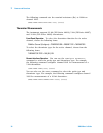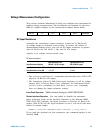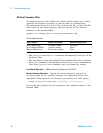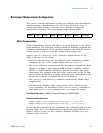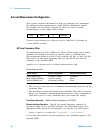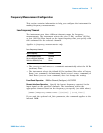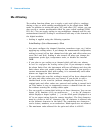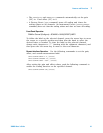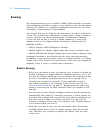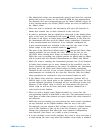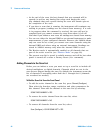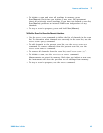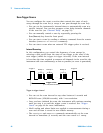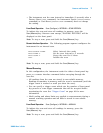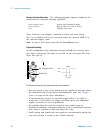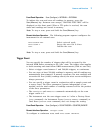42 34980A User’s Guide
2 Features and Functions
Scanning
The instrument allows you to combine a DMM (either internal or external)
with multiplexer channels to create a scan. During a scan, the instrument
connects the DMM to the configured multiplexer channels one at a time
and makes a measurement on each channel.
Any channel that can be “read” by the instrument can also be included in
a scan. This includes any combination of temperature, voltage, resistance,
current, frequency, or period measurements on multiplexer channels.
A scan can also include a read of a digital channel or a read of the
totalizer count on the digital modules. Scanning is allowed with the
following modules:
• 34921A through 34925A Multiplexer Modules
• 34950A Digital I/O Module (digital input and counter channels only)
• 34952A Multifunction Module (digital input and totalizer channels only)
Automated scanning is not allowed with the other switching modules.
In addition, a scan cannot include a write to a digital channel or a voltage
output from a DAC channel. You can, however, write your own program to
manually create a “scan” to include these operations.
Rules for Scanning
• Before you can initiate a scan, you must set up a scan list to include all
desired multiplexer or digital channels. Channels which are not in the
scan list are skipped during the scan. By default, the instrument scans
the list of channels in ascending order from slot 1 through slot 8
(channels are reordered as needed). If your application requires
non- ordered scanning of the channels in the present scan list, see
“Non- Sequential Scanning” on page 57. Measurements are taken only
during a scan and only on those channels which are included in the
scan list.
• You can store at least 500,000 readings in memory and all readings are
automatically time stamped. If memory overflows, a status register bit
is set and new readings will overwrite the first (oldest) readings stored.
The most recent readings are always preserved. You can read the
contents of memory at any time, even during a scan. Reading memory
is not cleared when you read it.
• Each time you start a new scan, the instrument clears all readings
(including alarm data) stored in reading memory from the previous
scan. Therefore, the contents of memory are always from the most
recent scan.



